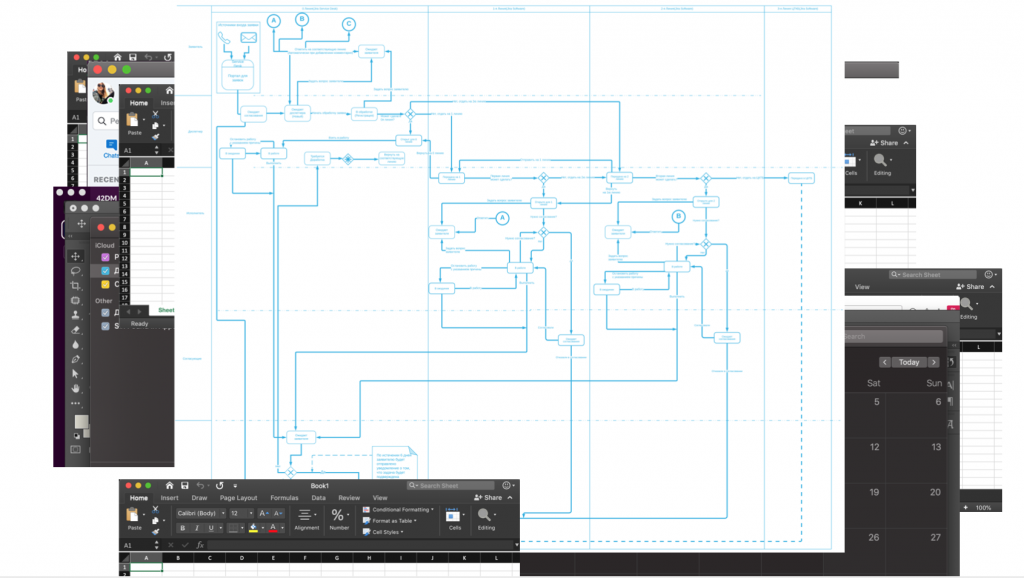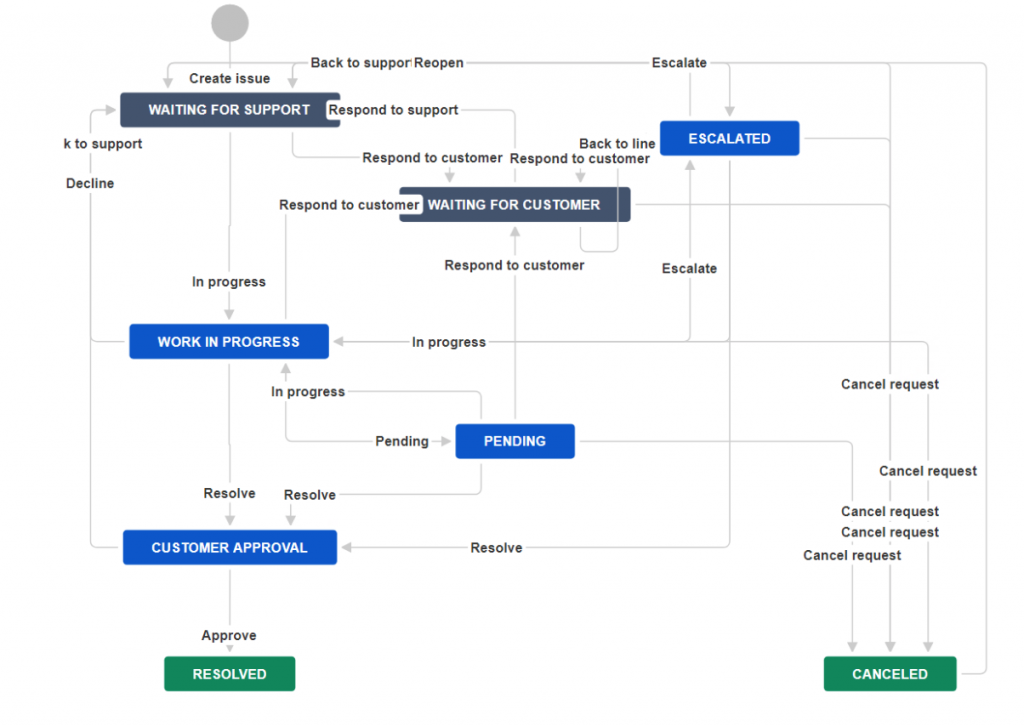Everyone knows JIRA as a bug tracker or as a system for managing projects, but this is far from all its power. We’ll talk about this use today.
It’s clear that Atlassian has a huge family of products, so we’ll try to narrow down the benefits we’ll talk about: it will be Jira Core, Service Desk, Confluence and Jira Software, no matter how strange it sounds, because of the word Software.
I will try to be brief, because usually such conversations and take hours. So.
What is it and features that you need to know about at the start
To begin with, the Jira-Service Desk-Confluence bundle is ideal for organizing Support departments and processes for any business, this is probably the most popular case on the market right now. But do not despair, if you need to set up processes for the design department, HR, Security, IT and something else, then this can still be done. Let’s start with the benefits of using Atlassian.
Use cases
Here I mean Cloud, Server, DataCenter solutions. Someone has a suspicion of Cloud systems, someone, for example, banks or government agencies, needs to store all the data on the territory of the country, so you need to use the Server version. And it’s easier for someone not to worry about their own capacities, and the flexibility, speed of development of the cloud version attracts more and more customers.
Low entry threshold
I remember how we started to implement Service Desk and Jira Software for the IT department of a large agricultural holding in Ukraine, after a couple of months of IT workers, their colleagues from other departments, I must say, people are not IT at all, asked for the same tool. They just walked alongside, looked at some new instrument, and that’s all. A few hours of training are enough for your employees to use Jira and use all the built-in functionality, and there are quite a lot of it. We will talk about it further.
Price
Have you seen the prices of HP desktop service? What about IBM? ZenDesk? In addition to functionality and cost, you still get quality support from Atlassian. Yes, for an enterprise it’s not a problem to spend a couple of hundred thousand dollars on software, which can be used later, but even these guys are asking the logical question “Why?”. Starting to compare, it turns out that Atlassian can cover ITIL, ITSM processes, and even provide reporting and allows you to keep the company up-to-date.
Flexibility
When they tell me that the company decided to merge the two departments, so in some (and almost any) enterprise software, you need to change the processes, interface and settings, and that takes six months to do this, it starts to get me down. Yes, here, of course, it also takes time to reorganize and change, but as a rule, for large and automated processes it is weeks, and for something simple, days even.
Modularity
Jira, Service Desk, Confluence has a lot of built-in functionality, which, as we already found out, is not expensive, but quite often, it is not enough. (Atlassian would not be Atlassian if it were otherwise). Therefore, there are plugins, with additional functionality that allows you to do some small, or vice versa, big thing. Using plugins, you can do almost everything, and it’s all in the same system, a single control panel. Well, to be honest, what can’t be done with a plugin – can be done in other ways =)
Things to remember when using Jira
Using Jira and Service Desk will not fix your processes on its own. You still need an approach to the organization of work, to the construction of business processes and the level of bureaucracy in your business.
Customization options correlate with expertise. I mean, in order to build a complex process by automatically creating / closing tasks, copying comments and other joys, you need to get a deeper understanding of the tools, plug-ins, approaches, and, most importantly, Best practice for organizing a process.
Example
Well, let’s try to understand, for example, how you can use these products in a non-IT business. In general, this is a rather old myth or opinion that such systems are suitable only for IT specialists, or worse, only for software development. In fact, all these are just tools that can be adapted to any business, any process, any needs. It is just a matter of desire and time spent.
So, back to the examples. Let’s take, for example, a bank. There is a bank, it has departments, and there is the Project Office, Economic, HR, Security, Information Security, Risks, of course, IT Department, Support, Finance Department, Lawyers, even cash desks. All this requires some kind of control, a task accounting system, time, Service Desk for internal and external users. Places where heads of departments, departments and other units can collect reports and make plans.
Now we look at how some department works. For example, here is a business process for processing user requests.

Here are approves from leaders, and expectations of execution, SLA. Disparate sources of requirements and knowledge, storing data in a heap of local files that are in no way synchronized. It can be seen of course badly, but it worked the same way, so it’s not scary 🙂
And here is how it is organized in Jira:

- Built desk service with formalized processes and forms for creating requests;
- Customized workflow at Jira Service Desk, Jira Software;
- A huge amount of automation (copying comments between lines, auto-closing applications, auto-creating applications, status synchronization, and more);
- Knowledge base and instructions at Confluence.
Reporting
Reporting in Jira is a separate issue, but if you try to quickly explain the difference in collecting and reporting in non-IT business (at least where I saw it) before and after Jira: Imagine that you need to drive by car once a week, but this machine needs to be assembled in pieces every time. Each time, you go to the department that deals with engines, and it gives it to you, but not all, because the cylinders are made in another place. You ask to get you the cylinders while you go behind the chassis, there you will also find a surprise, everything is there, but there are no wheels, and when you find the wheels, they are without tires, and now you have been running all day, it seems you’ve already collected cars, but the guys gave you the wrong keys, and the steering wheel is not attached to anything at all. And now you cannot go to the manual to show him the car, you take photos of the car, and tell how good it is. Do you understand what I mean? So Jira is a collection factory already built, you set the parameters which report you need, and get it right there, according to the latest relevant data in the system.